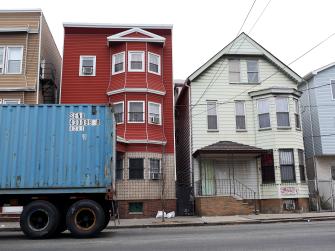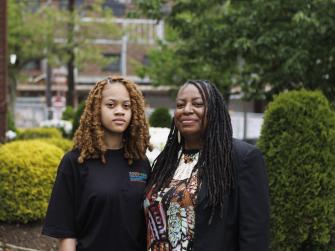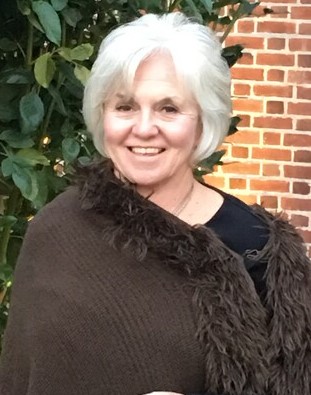N.J. reports 14 COVID deaths, 4,145 new cases as transmission rates remain ‘high’ in 11 counties – NJ.com

New Jersey on Friday reported 4,145 COVID-19 confirmed positive tests and 14 deaths as federal officials continue to recommend people where masks indoors in 11 of the state’s 21 counties due to “high” transmission rates.
The state’s seven-day average for confirmed cases was 3,725 on Friday, down 7% from a week ago and up 88% from a month ago.
The statewide rate of transmission for Friday was 1.08. When the transmission rate is over 1, that means each new case is leading to at least one additional case and the outbreak is expanding.
There were 865 patients with confirmed or suspected coronavirus cases reported at 70 of the state’s 71 hospitals as of Thursday night. One hospital did not report data. Hospitalizations still remain significantly lower than when they peaked at 6,089 on Jan. 10 during the Omicron wave.
There were at least 172 people discharged in the 24-hour period ending Thursday, according to state data. Of those hospitalized, 106 were in intensive care and 43 were on ventilators.
The positivity rate for tests conducted on Sunday, the most recent day with available data, was 18.87%.
The state on Friday also reported 1,149 probable cases from rapid antigen testing at medical sites.
The Centers for Disease Control and Prevention now lists 11 New Jersey counties with “high” transmission rates — Atlantic, Burlington, Camden, Cape May, Gloucester, Mercer, Monmouth, Morris, Ocean, Salem and Sussex. Those in high-risk areas are recommended to wear a mask indoors in public and on public transportation and stay up-to-date on vaccinations, according to the CDC.
Ten counties are in the medium risk category: Bergen, Cumberland, Essex, Hudson, Hunterdon, Middlesex, Passaic, Somerset, Union and Warren. Masks are not recommended in the medium and low regions.
TOTAL NUMBERS
New Jersey has reported 2,043,979 total confirmed COVID-19 cases out of more than 17.7 million PCR tests conducted in the more than two years since the state reported its first known case March 4, 2020.
The Garden State has also recorded 337,194 positive antigen or rapid tests, which are considered probable cases. And there are numerous cases that have likely never been counted, including at-home positive tests that are not included in the state’s numbers.
The state of 9.2 million residents has reported 33,678 COVID-19 deaths — 30,615 confirmed fatalities and 3,063 probable.
New Jersey has the seventh-most coronavirus deaths per capita in the U.S. — behind Mississippi, Arizona, Oklahoma, Alabama, Tennessee and West Virginia — as of the latest data reported May 17. Last summer, the state still had the most deaths per capita in the country.
The latest numbers follow a major study that revealed even a mild case of COVID-19 can significantly affect the brain. Long COVID — the term commonly used to describe symptoms stemming from the virus long after a person no longer tests positive — has been found to affect between 10% and 30% of those who contract the infection, regardless of whether they have a mild or serious case.
VACCINATION NUMBERS
More than 6.91 million of the 8.46 million eligible people who live, work or study in New Jersey have received the initial course of vaccinations and more than 7.8 million have received a first dose since vaccinations began here on Dec. 15, 2020.
More than 3.79 million people in the state eligible for boosters have received one. That number may rise after the FDA on Tuesday approved booster shots for healthy children between the ages of 5 and 11. U.S. regulators authorized the booster for kids hoping an extra vaccine dose will enhance their protection as infections once again creep upward.
SCHOOL AND LONG-TERM CARE NUMBERS
For the week ending May 15, with about 56.4% of schools reporting data, another 11,135 COVID-19 cases were reported among staff (3,008) and students (8,127) across New Jersey’s schools.
Since the start of the academic year, there have been 125,550 students and 37,197 school staff members who have contracted COVID-19 in New Jersey, though the state has never had more than two-thirds of the school districts reporting data in any week.
The state provides total student and staff cases separately from those deemed to be in-school transmission, which is narrowly defined as three or more cases linked through contact tracing.
New Jersey has reported 876 total in-school outbreaks, including 6,234 cases among students and staff. That includes 69 new outbreaks in the latest weekly report ending May 23. The state reported 82 in-school outbreaks the previous week.
At least 9,113 of the state’s COVID-19 deaths have been among residents and staff members at nursing homes and other long-term care facilities, according to state data.
There were active outbreaks at 343 facilities, resulting in 3,751 current cases among residents and 3,489 cases among staff, as of the latest data.
GLOBAL NUMBERS
As of Friday, there have been more than 527 million COVID-19 cases reported across the globe, according to Johns Hopkins University, and more than 6.28 million people died due to the virus.
The U.S. has reported the most cases (more than 83.8 million) and deaths (at least 1,004,156) of any nation.
There have been more than 11.48 billion vaccine doses administered globally.
Thank you for relying on us to provide the local news you can trust. Please consider supporting NJ.com with a voluntary subscription.
Deion Johnson may be reached at djohnson@njadvancemedia.com. Follow him on Twitter @DeionRJohhnson









 Mrs. Barbara Jennings Bevilacqua, 75, died on May 25, 2022 at her home in Verona. Visiting will be held in the Prout Funeral Home (370 Bloomfield Avenue, Verona) on Tuesday, May 31 from 5 to 8 p.m. A funeral mass will be offered in Our Lady of the Lake Church (32 Lakeside Avenue, Verona) on Wednesday, June 1 at 10 a.m. Interment will follow at Gate of Heaven Cemetery.
Mrs. Barbara Jennings Bevilacqua, 75, died on May 25, 2022 at her home in Verona. Visiting will be held in the Prout Funeral Home (370 Bloomfield Avenue, Verona) on Tuesday, May 31 from 5 to 8 p.m. A funeral mass will be offered in Our Lady of the Lake Church (32 Lakeside Avenue, Verona) on Wednesday, June 1 at 10 a.m. Interment will follow at Gate of Heaven Cemetery.